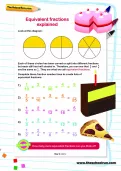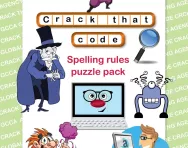Important update from TheSchoolRun
For the past 13 years, TheSchoolRun has been run by a small team of mums working from home, dedicated to providing quality educational resources to primary school parents. Unfortunately, rising supplier costs and falling revenue have made it impossible for us to continue operating, and we’ve had to make the difficult decision to close. The good news: We’ve arranged for another educational provider to take over many of our resources. These will be hosted on a new portal, where the content will be updated and expanded to support your child’s learning.
What this means for subscribers:
- Your subscription is still active, and for now, you can keep using the website as normal — just log in with your usual details to access all our articles and resources*.
- In a few months, all resources will move to the new portal. You’ll continue to have access there until your subscription ends. We’ll send you full details nearer the time.
- As a thank you for your support, we’ll also be sending you 16 primary school eBooks (worth £108.84) to download and keep.
A few changes to be aware of:
- The Learning Journey weekly email has ended, but your child’s plan will still be updated on your dashboard each Monday. Just log in to see the recommended worksheets.
- The 11+ weekly emails have now ended. We sent you all the remaining emails in the series at the end of March — please check your inbox (and spam folder) if you haven’t seen them. You can also follow the full programme here: 11+ Learning Journey.
If you have any questions, please contact us at [email protected]. Thank you for being part of our journey it’s been a privilege to support your family’s learning.
*If you need to reset your password, it will still work as usual. Please check your spam folder if the reset email doesn’t appear in your inbox.
11 ways to take your child's reading to the next level

1. Use morphology to understand the spelling of an unfamiliar word
Morphology is the study of how words are formed and how they relate to other words.
By analysing parts of words (for example, root words, prefixes and suffixes), your child will start to understand more about English spelling and its rules and conventions.


Start a unique learning programme!
- Weekly programme for each school year
- Worksheets sent direct to your inbox
- Keeps your child's learning on track
2. Use syntax to establish the meaning of an unfamiliar word
Try to get your child in the habit of reading a word in the context of its sentence rather than in isolation. If a word is tricky, ask them to look at the words surrounding it and try to guess what the word could be and what it might mean. A dictionary is a brilliant primary literacy tool and there are lots of dictionaries designed specially for children to choose from.
3. Error correction
Teach your child ways to self-correct. If a word is causing problems, encourage them to say it aloud. Does it sound right? Why doesn’t it sound right? Run through a checklist of words which might fit that slot in a sentence.
4. Swap key words
Play word games as you’re reading. For example, ask your child what words you could replace existing words with and how it would change the meaning of the sentence.
5. Discuss characters and situations as they arise
Once your child is able to read the words, make sure they understand the plot and characters as they go along. Why is this character behaving in a certain way? What do they think might happen as a result of this action? Reading comprehension is an important skill which your child will acquire during their time in primary school.
6. Don’t just have them read aloud to you
Encourage your child to read books to a younger sibling or cousin if possible. This will encourage them to alter their delivery and care more about how the words sound and how the meaning is conveyed.
Research also shows that reading to a pet can be very beneficial for children, as it offers them the opportunity to practise their skills without the pressure of having to read perfectly every time.
7. Encourage cross-referencing
Look up the meaning of a word and, while you’re doing so, suggest looking for other similar words that could also have been used. A primary thesaurus will also help your child think about synonyms and antonyms and help develop their vocabulary.
8. Look into the origins of a word
When you’re looking up the meaning or spelling of a word, encourage your child to find out more about its origin. This will help consolidate a broader knowledge of language and how it works.
9. Look up the French for a word
Why not use this word exploration process to find non-English words for a concepts, too? Do it in moderation to minimise confusion, but it will help to engender a love of words (language-learning apps are a great way for kids to begin to learn about other cultures and languages).
10. Make 'word books' of difficult words encountered when reading
This will encourage your child to write the words down and also have a handy reference guide for when they come across them in the future. You could also write tricky homophones (words that sound the same but are spelt differently, like fair and fare or witch and which) next to them.
11. Learn how, when and why a text was written
Do a bit of digging to find out more about the origins of a text. Who is the author? Has the author written other similar things? Why did they write the text? Who else has written in a similar style? Lots of classic stories and texts are perfect for children to discover – we recommend KS1 classics, KS2 classics and modern classics for primary school children.







